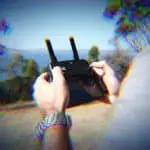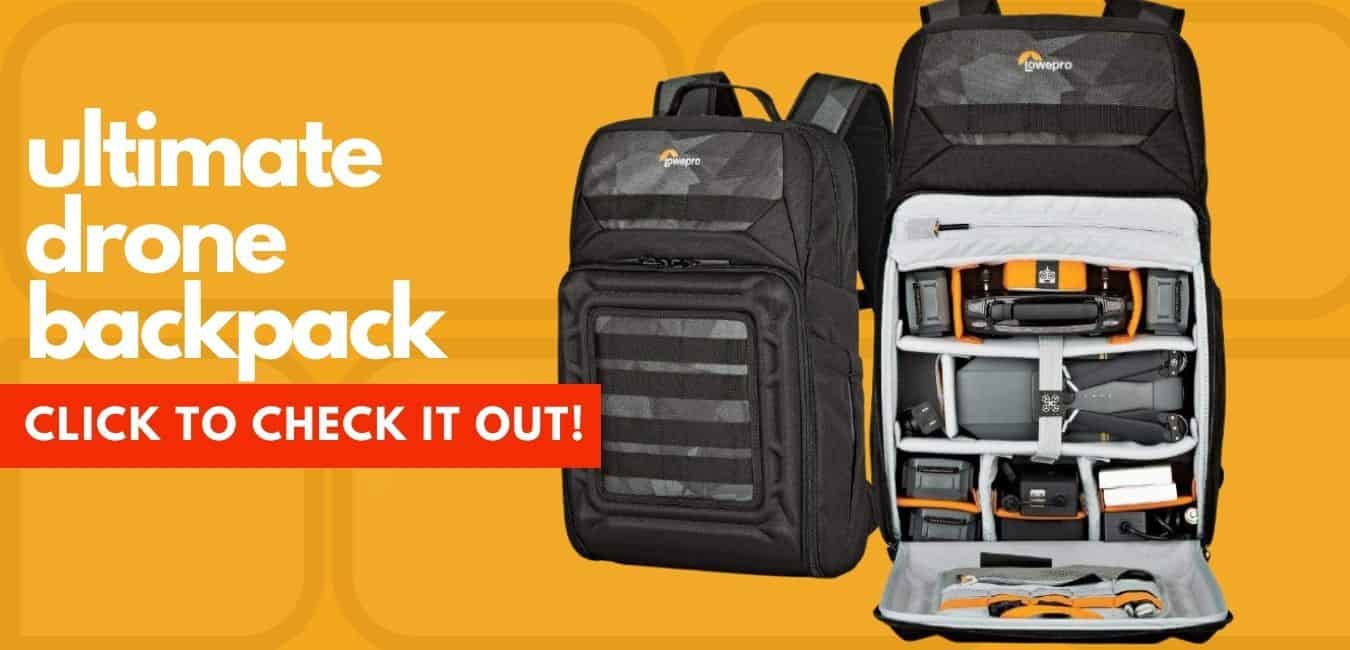What is Headless Mode On A Drone? What is does, and when to use it
Find it confusing to keep track of your drones orientation when flying? Want to know the answer to the question ‘what is headless mode?’ After you’ve read this article you will know what headless mode is, and when it makes sense to use it.
Headless mode (‘Homelock’ on DJI drones, and ‘Safe Mode’ on Yuneec drones) has benefits for drone owners, and can make it easier to keep your orientation when looking up at your drone from a distance. However, letting the algorithms do the work for you will not help you when you switch to a drone without headless mode, or when you need to navigate back if it fails. Also, if you’ve only ever flown headless mode, it will be a hindrance when you come to fly FPV (First Person View) for filming, or racing.
Quick Links
What is Headless Mode?
Unlike a car or a bike where it’s easy to determine forward-facing direction, your typical drone comes with similar-looking propellers in each position (symmetric design) so it’s difficult to know which direction it’s facing.
Some manufacturers have figured out a creative way to help drone users understand what the front-facing side of the device is. They simply use different colored LED’s on the front facing side of the drone.
Clever, right? But when you have to fly your drone over a long-range, chances are that you’ll not be able to differentiate between the differently colored LED’s – unless you have the eyesight of an eagle that is! This is where headless mode comes in.
Understanding Headless Mode

Headless Mode is a built-in ability for a drone to remember the orientation with which it took off.
Let’s look at an example:
Take off in a normal/conventional flight mode and then turn the drone to face you
Move the stick over to the left – notice that the drone moves to the RIGHT!
This is because the drone moves relative to the direction it is facing
This reversing of the controls can be confusing if you do not have an FPV camera relaying footage back to you. This is especially true if the drone is a long way from you and you cannot see which way it is facing.
Now with headless mode, no matter the orientation of your drone in the air, if you press LEFT on your transmitter, it’ll also move to the LEFT, in relation to YOUR point of view. It’s your orientation, not the drone’s orientation that matters. How cool is that?
This means that you can focus less on your drone’s orientation, and instead pay more attention to capturing better images and videos. This is especially important for newbies who may face huge challenges trying to align with the orientation of their drone’s.
So, in our view, the headless mode comes in handy eliminating ‘orientation confusion’, and avoids you travelling left when you wanted to go right due to the controls reversing!
The Drone Heading Problem
Mastering the art of flying a drone smoothly can be a tough task, even for some experienced pilots. Indeed, telling whether the front side of the aircraft is facing you or away from you can be difficult. Drones can get really small as you pilot them at distance.
That said, there are some drones that come with built-in LED lights which help you determine their orientation. However, these lights may not help much when it’s really sunny (the brightness of the sun diminishes the intensity of the LED lights), or when the drone is a long way away.
Try this – fly the drone with the LED light facing away from you. In that case, the drone will be facing the same direction as you. As the quadcopter flies, gently turn it some 90-degrees to the right, so the right-hand side of your drone will be pointing toward you. So, if you now push the right stick forward, the drone should fly to YOUR RIGHT. To the drone, that will be “flying forward” but to you as an onlooker, that will be “flying to the right.”
To illustrate, check out the below video:
Simply put, flying a drone can be quite a challenge especially when its forward-facing direction keeps changing. And that’s why headless mode was born!
Pros of Headless Mode
As we’ve already mentioned, there are many benefits to flying a drone in headless mode as opposed to the normal mode. That said, the primary target of headless mode is the beginner user or people who normally struggle to control their quadcopters with standard settings.
In general, the mode makes it easier to learn how to fly a drone. You’ll be able to focus on enjoying the experience and you won’t need to worry about controls reversing when you change the direction you are facing. The more time you are in the air without any issues, the more confidence you will gain.
With less guesswork involved, the chances of crashing also reduce. And in the long-run, that means you’ll have fewer spare parts to buy! If you have a DJI drone, it’s worth looking into the DJI Care Refresh protection plan.
If your drone is a long way from you, and you want it to come back, you may actually be sending it further away! You might not be able to see which way it’s facing so it might be travelling further out when you push the stick. This is the scenario when Headless Mode is the most useful. Just pull the stick towards you and it will head your way, regardless of the direction it’s facing in.
If you are flying in a tight space (performing asset inspections, for example), and the drone is facing you, then headless mode can be helpful. A couple of times I have lost concentration, and sent a drone the wrong way as I forgot that the controls had reversed due the drone facing me!
Headless mode can also be useful on long range drones. The DJI Phantom has headless functionality (referred to as ‘Home Lock’), and has a long range so is easily capable of flying out of visual line of sight. If this happens, and you are struggling to see the heading on the map, then Home Lock can really help. As with headless mode on other drones, just pull the stick towards to you and it will head your way, regardless of which way it is facing.
Cons of Headless Mode
If you get used to flying drones in this mode, you could struggle to transition to the standard mode of flying where movement is relative to the way the drone is facing.
In most cases, headless mode does not work when flying in FPV mode, and this is the mode that you will be flying in the most. This means that relying on headless mode will be detrimental when you start flying in FPV mode, which is how you will fly if you have a drone with camera, or a racing drone. When flying with FPV goggles, or viewing FPV video on your controller or phone, you are always viewing footage from the front of the drone. This means that LEFT always moves the drone LEFT, and RIGHT always moves the drone RIGHT.
Something else to be aware of is that the on board technology that enable headless mode can be sensitive to electromagnetic interference. So if you are flying near pylons, or metallic towers, headless mode be affected and the assistance it provides may be affected, or no longer work at all. If the function is lost altogether, then you will need to fly back using the normal mode.
How do I turn on Headless Mode?

A lot of drones have this feature, but it’s not always referred to as ‘Headless Mode’. For example, DJI call it ‘Home Lock’, and Yuneec call it ‘Safe Mode’.
It’s a boring answer I know, but if the buttons on the controller are not labelled then you have to check the manual. A lot of drone controllers have tons of buttons. Cheap drones may also have generic controllers which could be sold by many different companies. In a lot of these cases you will find that the buttons are not labelled.
When the drone is flying above and you want to confirm whether it’s in headless mode or not, all you need to do is turn the drone to face you, and move the right stick either left or right: if you have headless mode activated, then the drone should still move in the direction you pushed the stick.
Is Headless Mode Reliable?
As we’ve already mentioned, this is a computer-controlled mode and its goal is to remove the need for to you to figure out which way to push the sticks, relative to which way the drone is facing. But as you know, nothing is perfect in this world, so can you trust headless mode?
As much as this mode is lauded for its high level of effectiveness, it may disappoint when it enters the vicinity of electromagnetic interference (EMI). We’re talking about proximity to power lines, telecommunications towers, and other infrastructure. So, try to avoid flying your quadcopter around those as much as possible.
Is Headless Mode for Beginners?
The headless mode is to beginners what the Anti-Lock Braking System (ABS) braking system is to drivers. In other words, while it’s possible to fly a drone without it, your chances of making a directional error when in this mode are greatly reduced.
If you’re type of person who likes to take their time to learn how to do something properly, then you can probably skip past headless mode and learn to fly the conventional way. This will pay dividends when you get into FPV flying, and will enable you to fly all drones, even if headless mode fails.
If you’re looking for a gentle learning curve or want to get flying as quickly as possible, headless mode is for you. If you do go this route, don’t bank on headless mode for too long. Rather learn how to fly conventionally to ensure you can go on to fly FPV and get the most out of flying drones.
Is Headless Mode Cheating?
The world around us is gradually becoming automated. We even have self-driving cars on our roads today. When it comes to hobbies and sports, automation is often seen as removing the skill and reward out of the pursuit.
Headless mode is just like driving a car with lane-assist and/or an Anti-Lock Braking System (ABS). Such features only make the ride safer. This, in our view, is a good way to build your confidence as you rack up the hours in the air. But as we said earlier, learn to fly without headless mode sooner rather than later and take the proverbial training wheels off so you can develop your flying skills!
Should you Buy a Drone with Headless Mode?

We’d like you to make this decision based on your preferences and level of experience. There are numerous benefits to using this mode, especially if you’re a newbie or if you are daunted by the idea of flying a drone while keeping track of the controls relative to which way the drone is facing.
This mode helps you overcome the fear of losing orientation plus it gives you an opportunity to familiarize yourself with your drones features and behaviours. Knowing which way your drone will head next, without having to think too much, will also reduce the risk of crashes while you are learning.
Should I Learn to Fly Using Headless Mode?
Only when you’re a complete beginner or you’ve been causing some serious crashes (!) should you consider using it. The real joy of flying quadcopters is by doing so manually – but what’s the point of doing so if you’re not comfortable with the basics?
Can it work with FPV
First off, FPV is an acronym for “First-Person View”. In FPV mode, you get to view the world just the same way your drone does. In these cases, you don’t need headless mode as the drone will always be facing the same way as you are (as you are watching the video feed). This explains why most manufacturers disable headless mode for FPV flights.
Summary

Now you know the answer to the question ‘what is headless mode’, you can choose to use it or not depending on your level of experience, and the situation you are in.
This is a tool that’s meant to provide you with a gentle learning curve so you can become a confident pilot, so we think it’s fine to use to when just getting started. We do recommend using it only as a stepping stone to more advanced skills and flying FPV.
Headless mode is also useful when your drone is beyond visual line of sight, and you are having problems with the drones map and telemetry. Activating headless mode in these cases will make it easy to bring your drone back.
Please let us know if there is anything else you would like to see in this article.





